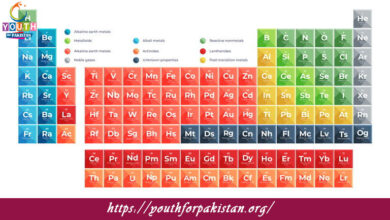Welcome to the Biophysical Chemistry MCQs with Answers, it helps learners quickly identify areas for improvement in Biophysical Chemistry Online Test.
| Biophysical Chemistry is an interdisciplinary field that merges principles of physics and chemistry to study biological systems at the molecular level. It investigates the physical principles underlying the structure, function, and interactions of biological molecules, such as proteins, nucleic acids, and lipids. Key topics include molecular dynamics, spectroscopy, thermodynamics, and the study of biomolecular interactions.
For effective learning in Biophysical Chemistry, utilizing diverse educational resources is crucial. Biophysical Chemistry MCQs offer a range of questions that test understanding of fundamental principles and advanced topics in molecular biology and physical chemistry. Biophysical Chemistry quiz questions reinforce learning by focusing on specific aspects of biophysical principles and applications in biological systems. Comprehensive exam preparation is facilitated through Biophysical Chemistry multiple choice questions, covering essential concepts and advanced theories necessary for a thorough understanding. |
Biophysical Chemistry Online Quiz
By presenting 3 options to choose from, Biophysical Chemistry Quiz which cover a wide range of topics and levels of difficulty, making them adaptable to various learning objectives and preferences. You will have to read all the given answers of Biophysical Chemistry Questions and Answers and click over the correct answer.
- Test Name: Biophysical Chemistry MCQ Quiz Practice
- Type: Quiz Test
- Total Questions: 40
- Total Marks: 40
- Time: 40 minutes
Note: Answer of the questions will change randomly each time you start the test. Practice each quiz test at least 3 times if you want to secure High Marks. Once you are finished, click the View Results button. If any answer looks wrong to you in Quiz, simply click on question and comment below that question, so that we can update the answer in the quiz section.
Download Certificate of Biophysical Chemistry Test
On the end of Quiz, you can download the certificate of the quiz if you got more than 70% marks.
Biophysical Chemistry Flashcards

The primary structure of a protein refers to the sequence of ________.

Which of the following is NOT a type of non-covalent interaction?

The pH at which a protein carries no net charge is called the ________.

The folding of a protein into its native conformation is determined by its ________ structure.

Which of the following is NOT a characteristic of enzymes?
Increase reaction rate at any condition

The ΔG°' of a reaction at equilibrium is ________.

What is the approximate bond angle in a water molecule?

The energy required to bring reactants to the transition state is called ________.

Which of the following is a colligative property?

Which of the following is NOT a type of chromatography?

The van't Hoff equation relates the change in equilibrium constant with ________.

The Michaelis-Menten equation describes the kinetics of ________ reactions.

Which of the following amino acids is NOT chiral?

What type of bond is formed between two cysteine residues in a protein?

The study of the rates at which reactions occur is called ________.

In a titration curve, the equivalence point corresponds to ________.
equal moles of titrant and analyte

Which of the following is a property of a good buffer solution?
Resists pH changes upon addition of acid or base

What is the function of a chaperone protein?
Assist in protein folding

The activity of an enzyme is affected by ________.

What is the major driving force for the folding of proteins?

Which of the following is an example of a coenzyme?

Which type of bond holds the two strands of DNA together in the double helix structure?

What is the approximate diameter of an alpha helix in proteins?

Which technique is used to separate proteins based on their size and charge?

What is the pKa of a weak acid when it is half dissociated?

What is the function of a buffer solution in a biochemical assay?

The Michaelis constant (Km) is equal to ________ at half of Vmax.

What is the primary role of histones in eukaryotic cells?

Which of the following is NOT a type of protein secondary structure?

The pH scale measures the concentration of ________ ions in a solution.

Which type of chromatography separates proteins based on their affinity for a ligand?

What is the function of a cofactor in enzyme catalysis?

What is the charge of a protein at a pH below its isoelectric point?

Which of the following amino acids is aromatic?

What is the relationship between ΔG° and K when a reaction is at equilibrium?

Which technique is used to determine the three-dimensional structure of proteins?

What is the primary role of ATP in cellular metabolism?

Which of the following is NOT a component of nucleic acids?

The rate of an enzymatic reaction increases linearly with ________.

Which of the following is a colligative property of solutions?
If you are interested to enhance your knowledge regarding Physics, Computer, and Biology please click on the link of each category, you will be redirected to dedicated website for each category.






